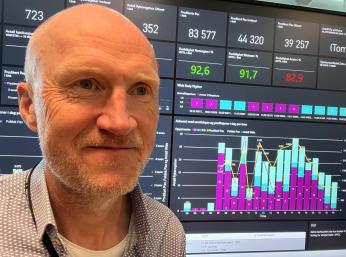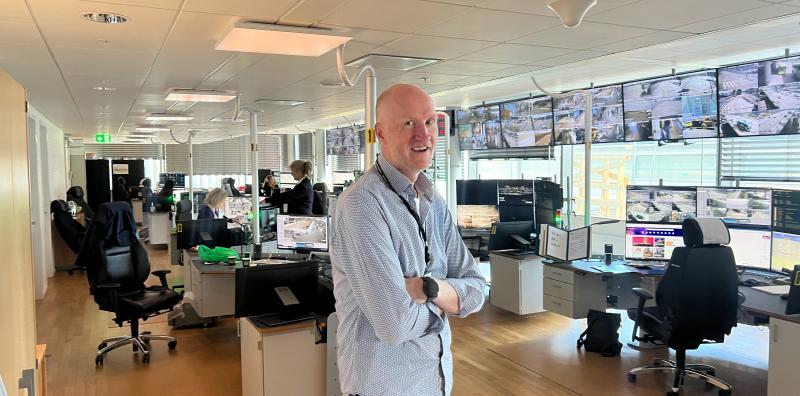 Streamlining airport operations across the entire network
Streamlining airport operations across the entire network
SESAR’s total airport management (TAM) solutions encourage the pro-active management of last-minute operational changes by connecting different players across the transportation chain. Using TAM collaborative procedures to access information improves punctuality, efficiency, resilience and environmental performance. Digital Business Developer for the Norwegian airport operator Avinor, Flemming Hølvold, explains the importance of having a single source of truth.
How important is TAM to European airports and air traffic management?
Timely information about airport operations, airspace demand, weather delay and unexpected events is crucial to the smooth running of air traffic. The European Commission has mandated the region’s largest airports to implement an airport operations plan (AOP) by 2027 as part of its Common Project 1 (CP1) regulation to accelerate the digitalisation of European airspace. TAM procedures are helping to establish this common and collaboratively agreed rolling plan and make it available to all relevant operational stakeholders.
Delivering this information directly to the Network Manager (NM) helps to avoid bottlenecks and manage contingency measures to minimise disruption. Europe’s 32 busiest airports already provide the Network Manager with departure management information (DPI) electronically, receiving flight update messages (FUM) in return as part of the airport collaborative decision-making (A-CDM) concept. The SESAR TAM solutions add more comprehensive data, extend the scope of the airport processes covered and include more players in this process, allowing a pro-active management of the airport operations and performance.
How does TAM work?
Connecting to multiple data sources improves the accuracy of the airport operations plan (AOP) and helps decision making by the airport operations centre (APOC). Avinor uses open application programme interfaces (APIs) to exchange data in a cost-effective way, making it accessible to multiple users – many of whom lack investment funds following the pandemic. For example, the operator has built an operational database that links the country’s 44 airports and sources data from operations ranging from airside de-icing operations to landside bus and train schedules. Information exchange will eventually transition to system wide information management (SWIM) – the service-oriented architecture anticipated by CP1 and supported by separate SESAR solutions. Soon more information will be shared between individual AOPs and the Network Operations Plan (NOP) to increase the predictability of the network. Importantly, the AOP covers a longer timeframe and includes a much bigger set of data than A-CDM, for example adding both airside and landside information and over the next few years Avinor will start to share these AOP updates dynamically with the NM as part of the AOP-NOP data exchange, all based on services.
Does TAM only apply to large airports?
While some airports including Paris Orly and London Heathrow have established airport operations centres and developed prototype platforms validated in first phases of SESAR research and innovation (SESAR 1 – 2008-2016), Avinor is demonstrating that smaller regional airports that fall outside the CP1 threshold can also benefit from TAM. For example, when we face weather disruptions during the winter months, we can actively use data about the situation in Trondheim and Bergen to plan operations in Oslo. This data improves our advance planning when there are a lot of flights going back and forth between these airports. We recently started a trial that adds passenger bookings from three domestic airlines to identify potential capacity challenges. At a system level, including smaller airports in the wider network benefits pre-tactical and strategic planning.
What are the main challenges and next steps?
The stakeholders need to understand why they are exchanging data and the potential benefits. If your business model is built around data, it becomes harder to openly exchange information and many commercial enterprises struggle with this. The prototype platforms developed within the SESAR3 JU PJ04-W2 TAM project are helping to break down industry barriers and to inform the regulatory framework. In a presentation about Avinor’s platform at Passenger Terminal Expo, I explain the importance of bridging the gap between stakeholders, especially between airports, airspace managers and airlines. Longer term, we expect all airports to have an AOP and to exchange data with the NOP, establishing a full ecosystem that has a domino effect from planning to operations.

The TAM project has received funding from the SESAR Joint Undertaking under the European Union's Horizon 2020 research and innovation programme under grant agreement No 874472
